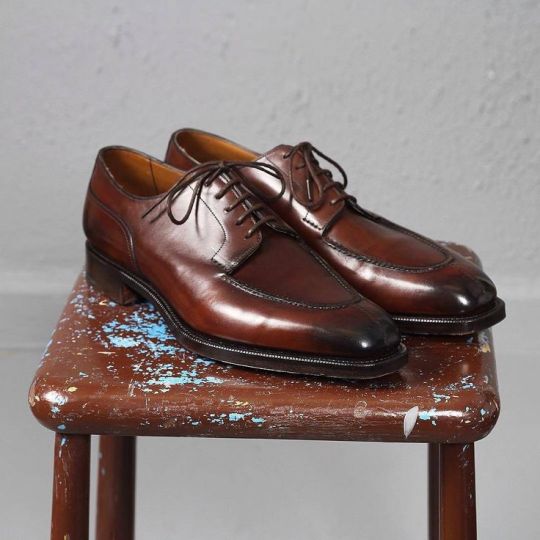
It’s easy to fall in love with a pair of oxfords, particularly if you’re browsing for shoes online. They’re naturally sleek, with minimally detailed uppers that give the shoes a sense of formality. And for many people, dressing up is the same as dressing well. Derbies by comparison can get lost in the mix, but I find them infinitely more practical. Like most men, I rarely wear suits. And for daily use, oxfords just look off to me with sport coats and trousers – even worse with jeans. They’re simply too formal.
When it comes to derbies, none make my heart pitter patter as much as the Norwegian split toe. I love them for both their design and how much they repulse others. It’s true they can look a bit taxidermic. And if done poorly, an elongated toe seam can even seem phallic. When everything comes together well, however, nothing looks as good to me. Wingtips are too common; cap toes too plain. Norwegian split toes plant your feet in the ground and say you like something a little different.
Apparently, the style has some workwear roots. John Lobb of St. James calls the style a Navvy cut for how they used to be worn by British navigational engineers (or navvies for short). Nicholas Templeman, who used to work as a lastmaker at the company, tells me men used to wear them when they worked on canals, railways, and roads:
The benefit a derby has over an oxford is in the tongue, which here is an extension of the vamp. So any water that runs down your waterproof trousers and onto your shoes will just run down the vamp. With an oxford, the water can seep in-between the facings and leak into your shoes. However, gents in town wouldn’t be exposed to the same elements as a navvie, so it wasn’t much of an issue for them. I’m not sure how the split toe seam itself came into being. It may have been an adaptation from sportswear, like fell shoes or ski boots. Moving the seam to the toe means you get the extra layer of reinforcement from the toe puff, protecting you from water ingress, which otherwise may not happen at the seam’s traditional side positions.
There are a million split toe models these days, ranging from more affordable $175 shoes to premium, handwelted, and customizable $1,500 designs. Sixteen that I think cover the gamut for almost everyone.
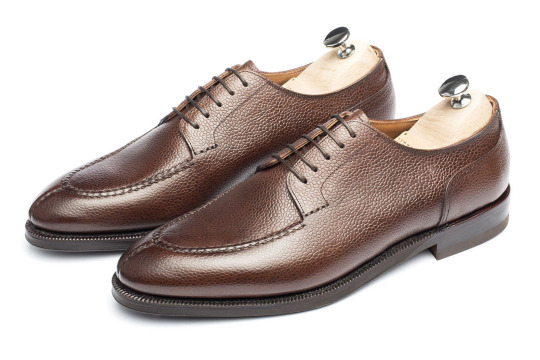
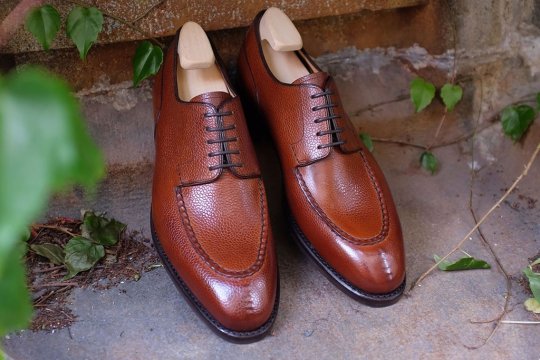
Meermin ($175): It’s easy to get split toes wrong. Allen Edmonds’ Delray, for example, has that flat, machine-sewn apron that I think can make this design look cheap. If you’re looking to save a few bucks, start instead with Meermin. Since their shoes are partially made in China, they can afford to have workers hand-sew their aprons. Their Hiro last is shapely, but more conservative than how it appears on Meermin’s website, and the studded Dainite rubber soles make these great for rainy days.
Another solid affordable model is Carlos Santos ($350), which also features a handsewn, pie-crust style apron. I like how the toe seam is a bit more discrete than the others on this list.
(photos via Meermin and Skoaktiebolaget)
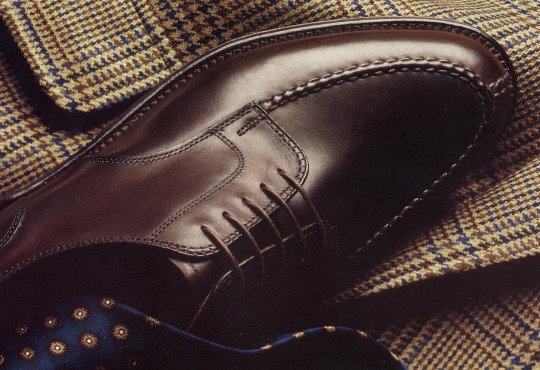
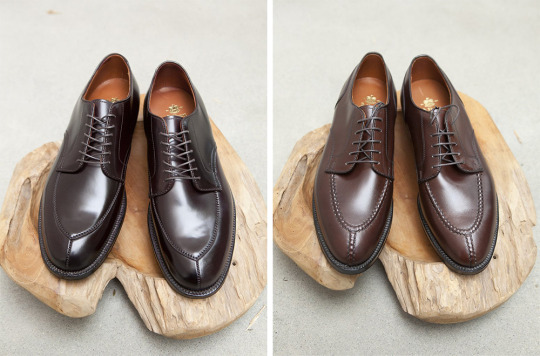
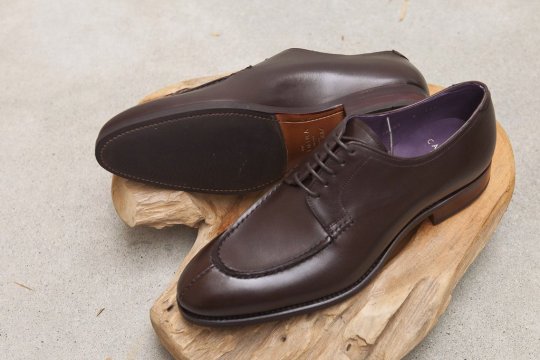
Alden ($587+): If you scroll through enough split toes, they’ll all start to look the same at some point. Except for Aldens, which have always been polarizing. Their v-tip is colloquially named because the apron ends in a point. Similarly, the u-tip is named so because it’s curved.
Enthusiasts on menswear boards will go back and forth endlessly on how they feel about that v-stitched apron and prominent toe seam. Alden has a conservative half-way point between the two models with their 7117 split toe, but it also lacks the character that makes the other designs distinctive.
Truthfully, at this price point, I prefer Carmina’s ($450), although some may feel they look like nearly everything else on this list (and they wouldn’t be wrong). That said, the shapely last and split-raised lake – where the leather has been scored and pinched together to form a lip – give the design some uniqueness.
(photos via Alden and Gentlemen’s Footwear)
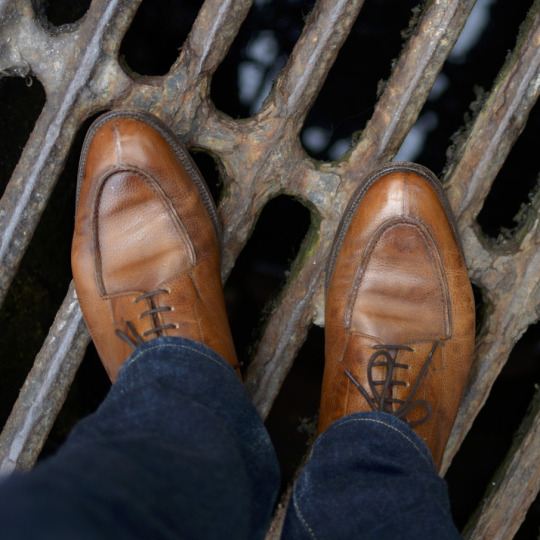
Crockett & Jones ($570): Crockett & Jones’ catalog is massive, which means they have a ton of different split toe models, especially if you’re willing to dig through their archive. This season, they carry their Hardwick, Balfour, and Wexford, among others. My favorite is the Cornhill, which they occasionally make for Ben Silver. It’s not available at the moment, but you can expect it to come back at some point.
For those unfamiliar, Crockett & Jones has two lines – their mainline benchgrades, then a higher-end handgrade collection. The Cornhill is part of the second. The channeled soles are made from softer and more flexible oak bark tanned leather; the uppers feature a handsewn apron (made by one of Crockett & Jones’ three specialists for this section alone). I find the stitching looks great, but it also comes at a price (nearly double the price of benchgrade shoes). For something more affordable, check out the Durham, which is a sportier, rounder take on the Cornhill.
(photo via Chris Crat)
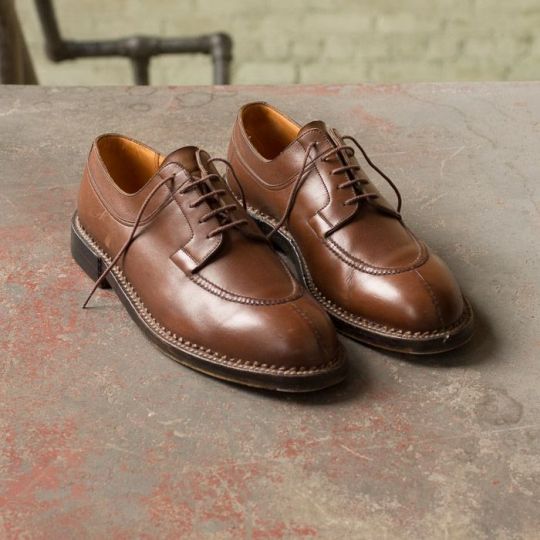
JM Weston ($1,005+): There’s no way around it, JM Weston’s two split toes – their canonical 677 Chasse and relatively subdued 598 Demi-Chasse – look ridiculous. The Chasse is built like a monster trunk. It has triple-leather soles, Norwegian welts, and a massive upper to match. The shoes are chunky, rustic, and unapologetic. As the marketing line goes, these were originally made for tromping out on the French countryside. My guess, however, is that the distinctive silhouette is mostly used for marketing purposes – separating JM Weston from the pack and lending a bit of fantasy to wealthy arrivistes who look up to the gentry class.
The shoes admittedly can look nice online, depending on the angle, but they’re all but unwearable if you spend most of your time in the city. The shape is just too thick and chunky. The Demi-Chasse (which is French for half hunt) is a little more manageable, but it lacks the stitching along the quarters. If you like the style, your best bet is to go for Paraboot’s Avignon ($300). Reasonably priced, rugged, and would look great with jeans. (Thanks to Alex for the suggestion!)
(photo via Menswear Market)
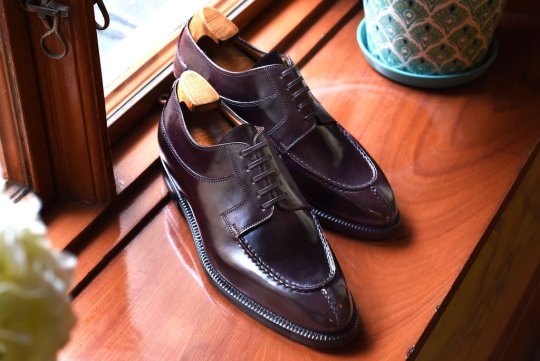
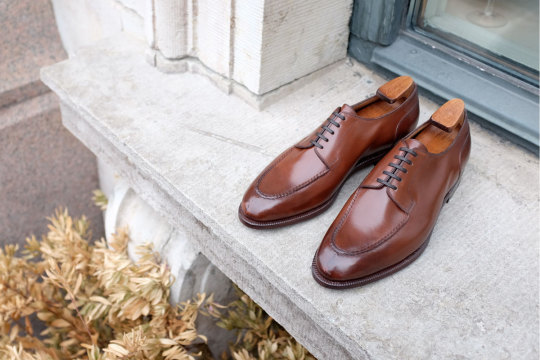
Enzo Bonafe ($550+): For responsible ballers who want some value for their money, Enzo Bonafe produces small batch, handwelted shoes in Bologna, Italy. Which means, unlike the machine-made Goodywear welted shoes on this list, they’ll last through a few more resolings, assuming you take care of the uppers.
Their split toe models start around $550 for calf and $860 for shell cordovan. At those price points, these are a tremendous value for what you’re getting – handwelted construction, handsewn aprons, and the ability to customize the design in almost any way you want. I particularly like the reverse split-toe construction shown on the second pair above, where the toe seam is hidden underneath the surface. Just gives the shoes a more discrete look.
Another great model like this is Ascot’s “Kaan” ($850). They use a maker in Northampton to produce the handsewn apron, then send the material to Vass for the rest of the production process. You can get those MTO through Ascot.
(photos via Skoaktiebolaget)
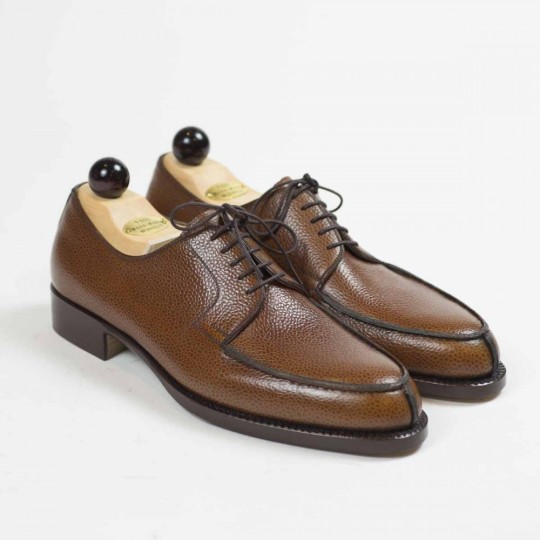
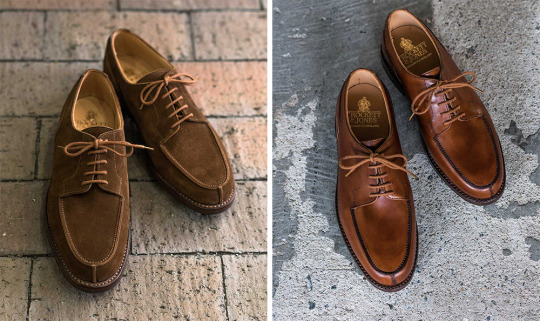
Vass ($735): Vass has another iconic split toe in the form of their Norweger, which gets the nod on this list for staying in keeping with the design’s utilitarian roots. While you can get the Norweger made any way you want through Vass’ flexible MTO program, I find it looks best in country grain leathers, double leather soles, and their rounder toe lasts. No Man Walks Alone, a sponsor on this site, has a pair in ready-to-wear form, although they can also take custom orders. Like with Enzo Bonafe, the handwelted construction here lends some nice value to the admittedly high price point.
If you like that design, there’s also Crockett & Jones’ Moreton ($700). It differs from Vass in that it’s Goodyear welted, features a slightly cleaner looking apron, and has some decorative stitching around the heel. It’s only available in Japan, however.
(photo via No Man Walks Alone and Frame)

Saint Crispin’s ($1,495): Saint Crispin’s really look their best as oxfords, but my favorite derby from them is their 633 split toe. The company specializes in close fitting, arch-hugging shoes, which have been handwelted in Romania. The 633 is my favorite of their split toes simply because the toe seam doesn’t come up as high on the uppers, which gives the style a more conservative look. And while Saint Crispin’s normally does these with machine-sewn aprons, I find the sleek lasts and careful detailing set them apart from things such as Allen Edmonds’ Delray. You can also get those aprons handsewn upon request, if you want. Orders can be placed through Skoaktiebolaget, The Armoury, and Leffot.
Unlike almost everyone on this list, Saint Crispin’s handsewn aprons show up well on suede, which is hard to achieve since the leather fibers in that area are less densely packed than smooth calf (which makes it hard to show off any detailing). The company can also nail cat monograms on the bottom of your shoes. Always a plus.
(photo via Skoaktiebolaget)
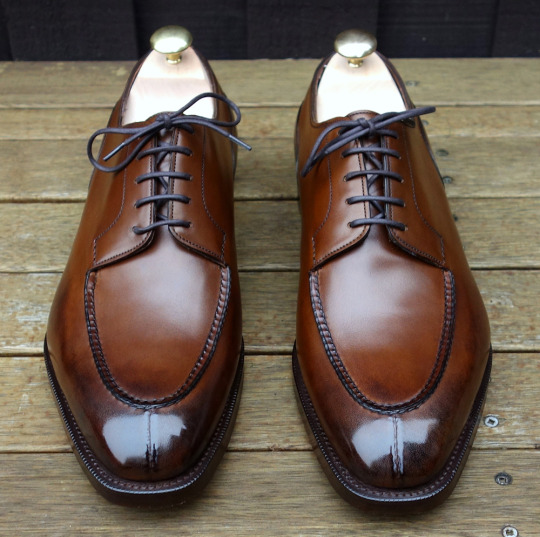
Edward Green ($1,415+): Finally, the crème de la crème. For me, the best and most iconic ready-to-wear split toe is Edward Green’s Dover, particularly on their slightly squared-off 606 last and dark oak leather (essentially the model pictured above). That said, the design works in almost any tasteful combination – in the company’s 202 or 606 lasts, the archival 32 or 33 lasts; plain calfskin, suede, or pebble grain; dark oak to burnt pine. Mr. Porter also has them in chukka form.
For me, the design looks great for several reasons. The company’s more conservative 202 and 606 lasts are neither too chunky nor sleek, which gives their shoes some versatility. The pie crust apron is just really well executed, particularly on calfskins. And the company has a very flexible made-to-order program, which allows you to get almost anything you want.
A close second here is John Lobb, which features a level of detailing that looks just as handsome. Edward Green simply edges out because they don’t limit you as much in their made-to-order program. That said, I’m already thinking about picking up a pair of John Lobb’s Harlyn ($1,560) later year in a mid-brown calf. With how great Norwegian split toes look under sport coats and trousers, it’s hard to have too many.
(photo via Gerry)
